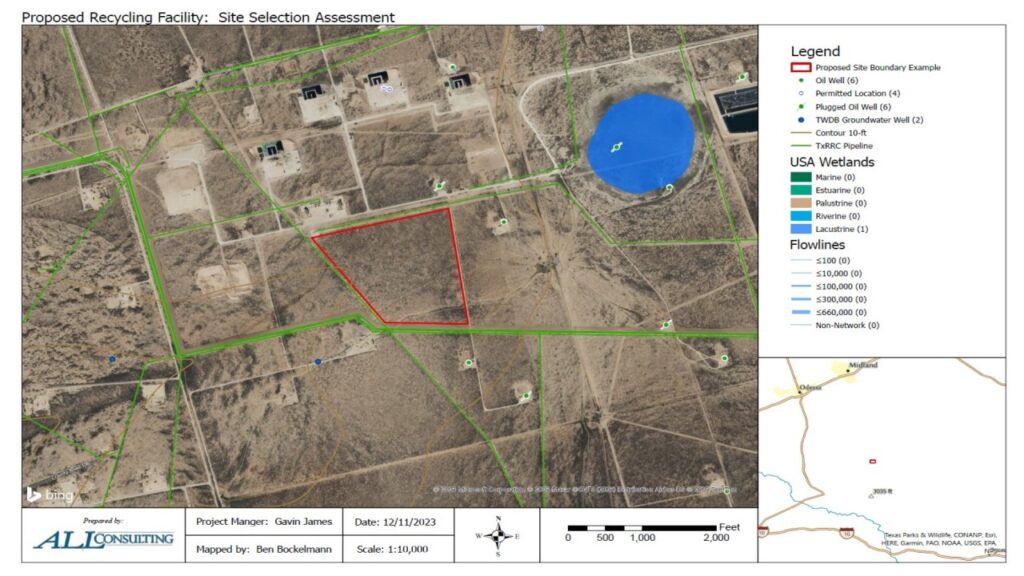ALL conducts regulatory site assessments (RSAs) to ensure efficient capital deployment for produced water management. The RSA process ensures that the prospective location is optimal for future acreage development. Essential considerations for impoundment planning are proximity to supporting infrastructure, including rights-of-way, access roads, electrical service and water conveyance pipelines. In addition, it is important to make all parties aware of possible environmental hazards such as 100-year floodplains, protected wetlands, and jurisdictional surface water bodies, including ephemeral streams. RSAs also consider site topography, as flatter locations require less cut and fill and ease implementation of stormwater controls during and after construction.
Regulatory requirements for impoundments vary from state to state and even intrastate, depending on intended usage, asset lifecycle duration, and water chemistry. Rules also diverge for on-lease impoundments, commercial facilities, and those intended for basic disposal volume storage versus recycling. Care in initial design and permitting can reduce cost overruns down the road.
At a minimum, a typical impoundment siting assessment will clearly define:
· Specific purpose/intended use of impoundment
· Regulatory requirements pertaining to the specific location
· Required environmental and sensitive location setbacks
· Nearby depth to groundwater (if available)
· Anticipated construction details (e.g., fill materials, grading, liners, leak detection, etc.)
· Nearby related infrastructure,
· Spatial requirements for operations
ALL recognizes the value of regular communication with regulatory agencies during the RSA process. Some expectations or preferences of the regulatory staff may be informal, and establishing a dialogue regarding impoundment details can reveal these nuances and make permit approval go more smoothly and quickly.
Follow ALL Consulting on LinkedIn to see this Post, and more in this series…and more!
